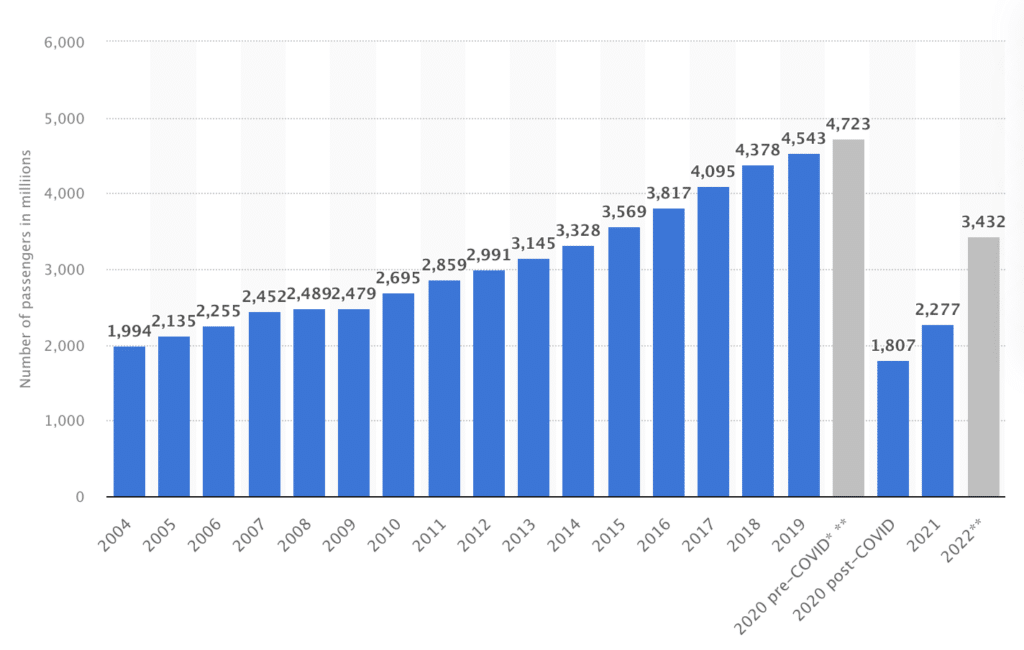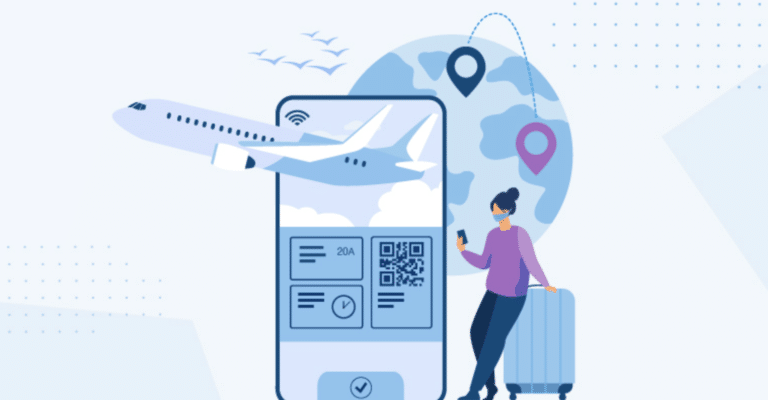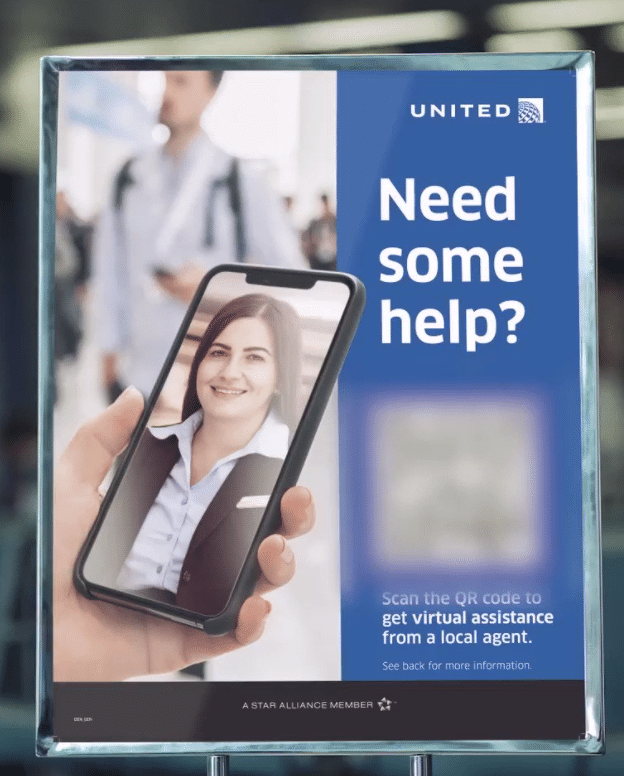The COVID-19 pandemic took a major toll on the airline industry, with travel rates dropping around the globe. However, this pause in service as usual presented airlines with the opportunity to change the way they do business for the better. As the state of commercial flight looks to return closer to normal in 2022, airlines can put what they’ve learned into practice rather than simply falling back to the status quo.
The industry’s new ideas and efforts when it comes to customer outreach and satisfaction were on full display at the Aviation Festival of the Americas 2021. In early November, representatives from major airlines, travel aggregators, airports, and technology brands came together in Miami to share insights and information around customer acquisition, customer journeys, and revenue transformation post-COVID. While the challenges facing the industry still persist, it was clear among festival attendees that properly leveraging mobile technology could make the difference between moving into the new era and applying yesterday’s tactics to today’s issues.
Challenges and Opportunities Facing the Aviation Industry

If you’re in the airline industry and COVID is still top of mind for you, you’re not alone. Of all the challenges currently facing the aviation industry, none is more evident than COVID. While 2021 has seen vaccine distribution return parts of the world to a state resembling normalcy, only 2.277 billion airline passengers worldwide flew this year — half the total passengers of 2019. With worldwide concern mounting over the pandemic’s Omicron variant, projected increases for 2022 are anything but certain.
Another difficulty airlines can agree on is the rising cost of fuel — in fact, Felix Antelo, CEO of Colombian budget airline Viva Air, cited fuel costs and COVID as his main concerns at the festival. And while there’s a motion to make airplanes cleaner by cutting down on carbon emissions, carbon neutral fuel is currently cost prohibitive and cleaner, cheaper fuel is still years away.
There are other transactional processes that the aviation industry has identified as having potential for growth. Airlines know the value of making extra revenue selling ancillaries on board, but that onboard window is short — selling these ancillaries around the clock would be deepening a revenue stream. Airlines can also make more money by competing with online travel agencies (OTAs), which capture a great deal of bookings thanks to the user experience and technology they offer. In fact, many users won’t even attempt to book a flight on an airline’s website, assuming that it won’t be available there.
Aviation Leaders’ Top Priorities and How Mobile Helps
With a framework defined by both the difficulties and opportunities facing the industry, airline thought leaders and decision makers have identified their priorities for growth over the next year-plus — and mobile plays a huge role in their plans. Here are some of the key areas for airlines to focus on if they want to keep up:
Personalization
One tactic aviation leaders are exploring for the sake of growth is personalization. Like in any other industry, offering customers a unique experience based on their interests and past behavior leads to greater engagement. Since airlines capture information about their customers during the booking process, there’s an opportunity to leverage data in the name of personalized experiences, eliminating dropoff through more relevant offers along their journey and in the future. Airlines can give repeat customers messages based on their previous transactions when they log onto their mobile sites, and those who download airline apps can be served a personalized onboarding experience. Customers view every brand interaction holistically, so offering them the best possible experience each time — based on collected information — will encourage repeat business.
Loyalty programs
Customer loyalty programs are a time-tested way for airlines to drive revenue. Offering incentives like free miles or seat upgrades encourages customers to give specific airlines repeat business, which increases customers’ LTV to those airlines. On the customer side, having a favorite airline is a convenient way to take some of the decision making out of booking a flight. Of course, everything related to an airline’s customer loyalty program can be expressed on mobile — customers can use an app to keep track of the points they’ve accrued, remain logged in without having to locate a membership identification number, and claim the rewards that they’ve earned.
Ancillary revenue
Aviation leaders are also putting a lot of thought into the ancillaries that they sell on board, and ways to expand them to their customers’ off-plane experiences. This process has already begun, with some airlines charging customers to select their seats or bring carry-on bags on a plane. Airlines currently make up to 50% of their revenue from ancillaries, and many are looking to build on that number — some decision makers are thinking about ways they can follow the lead of OTAs and offer deals on other travel experiences, like hotels and rental cars. An app would be the ideal place to book these ancillaries, as customers would be able to see their past transactions and store their payment information for easy checkout.
Seamless experiences
Finally, aviation leaders have identified that customers want the most seamless experiences possible, and are committed to providing them. Just as OTAs made travel agencies obsolete and changed the game in terms of convenience, so too are airlines looking to change the complexion of travel booking once again. Since customers want convenience — which means a preference for digital interaction over human interaction for some, and the ability to book their entire trip with a single source — airlines are focusing on beefing up their apps, making them one-stop hubs for planning, booking, and paying for all parts of a trip beyond just the flight, as well as receiving reminders and collecting rewards.
How Branch Helps Create Seamless Customer Journeys
As with other industries, any aviation brand’s most loyal customers will have their app downloaded, and this is critical — app users have higher conversion and retention rates and lifetime value than web users. Customers who use the app will already have their information saved in it, making things like checking in and getting boarding passes easier. Since 66% of mobile transactions occur within an app, it’s not hard to see why they’re so valuable. Branch is committed to making the customer’s app experience as smooth as possible, from installation to sale, ensuring every part of the journey is successful in the process.
To ensure their customers experience a seamless journey, airlines should be trying to attain a 100% app adoption rate among their customer bases. That’s a lofty goal, but they can maximize installation and use rates by offering everything that a customer could need and want from an airline app — a contained browsing experience that allows users to book everything — and making it simple and seamless for customers to make use of the app at every step of their journey. That means including options and actions around ticket management, seating and booking upgrades, entertainment, trip tracking and flight statuses, and loyalty program management. The app should also work faster than the mobile site while containing all of the same necessary information, and the airline must make sure that customers are correctly routed into the app instead of being sent to the mobile website (for example, when clicking a link in an email).

A properly functioning app also allows an airline to save money by better managing human labor. United Airlines, for example, is leveraging QR codes to increase app downloads and connect users with virtual agents. This allows United’s customer service representatives to devote time to customer needs beyond simple sales. Furthermore, if airline decision makers can identify some of their highest cost-to-serve pathways (such as “change my seat” or “change my flight”, for instance), they can lead customers to those self-serve options inside the app, thereby reducing customer service costs. Branch provides QR codes and Journeys (smart banners and interstitials) that can deep link users to the in-app destinations that brands most want to prioritize.
Image Source: United Airlines via Twitter
Finally, sending customers to their apps allows airlines to exert a greater level of control over what customers experience at every step of the journey. They can deep link customers directly to ticket sales, removing the additional steps that typically add to user dropoff along the way, or send incentives (via email or push notifications) that do the same thing even more effectively. Branch can create pathways from every other platform into a mobile app, seamlessly creating as many app users as possible and ensuring that airlines reap all of the associated benefits.
While the immediate future of aviation is still uncertain thanks to COVID, airlines are making plans to ensure continued success in the long run. It was clear at the Aviation Festival of the Americas that mobile growth is a key part of these plans. Branch is committed to assisting in the months and years to come, remaining a partner that airlines can trust.























